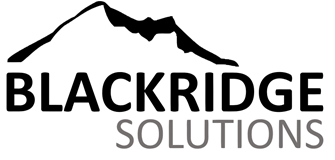environments such as construction, healthcare, and transportation. Lone workers are more
vulnerable to accidents, injuries, and violence, and it is essential to have a plan in place to
ensure their safety and well-being. This guide will provide a comprehensive overview of the
tools and strategies to help lone workers stay safe.
Risk Assessment and Planning
The first step in ensuring the safety of lone workers is to conduct a thorough risk
assessment. Employers must identify the hazards and risks of the task or work
environment. The assessment should cover areas such as physical hazards, environmental
risks, and human risks, such as violence and harassment. Once the risks have been
identified, employers must develop a safety plan that includes measures to prevent and
manage these risks.
Communication and Monitoring
Communication is a critical element in ensuring the safety of lone workers. Employers
should provide their lone workers with communication devices such as radios, mobile
phones, and GPS systems. These devices enable lone workers to stay in touch with their
colleagues and alert them in an emergency. Employers should also establish a system for
monitoring the welfare of their lone workers and responding promptly to any safety
concerns.
Personal Protective Equipment (PPE)
Personal protective equipment (PPE) is essential for protecting lone workers from physical
hazards. Employers must provide the appropriate PPE based on the tasks and work
environment. For example, a construction worker may require a hard hat, safety glasses,
and steel-toed boots, while a healthcare worker may require gloves, gowns, and masks.
Employers must also ensure that the PPE is maintained and replaced regularly.
Training and Support
Training and support are critical in ensuring the safety and well-being of lone workers.
Employers must provide their lone workers with the necessary training to carry out their
tasks safely and efficiently. This training should cover risk assessment, emergency
response, and communication. Employers should also provide their lone workers with
ongoing support, such as regular check-ins and access to counselling services. This
support can help to reduce the stress and isolation that lone workers may experience.
Emergency Response and First Aid
In case of an emergency, it is essential to have a plan in place to respond promptly and
appropriately. Employers must establish an emergency response plan that includes
procedures for reporting incidents, evacuating the area, and providing first aid. Employers
should also provide their lone workers with first aid training and ensure that they have
access to first aid kits and equipment. Employers may also consider providing their lone
workers with advanced first-aid training or medical equipment in high-risk environments.
Conclusion
Lone work can be challenging and risky, but with the right tools and strategies, lone workers
can stay safe on the job. Employers must prioritize the safety and well-being of their lone
workers by conducting a thorough risk assessment, providing communication devices and
personal protective equipment, and offering training and support. Employers must also have
an emergency response plan and provide their lone workers with first aid training and
equipment. By prioritizing the safety and well-being of their lone workers, employers can
create a safer and healthier work environment for everyone.
With a focus on lone worker safety and gas detection solutions, BLACKRIDGE Solutions
has become the leading authority in the industry. By carefully selecting the top manufacturers and developers, we have created an award-winning product portfolio that is highly respected and unique.
For further information, contact us at (778) 686-5799 or [email protected].


 RSS Feed
RSS Feed